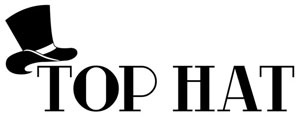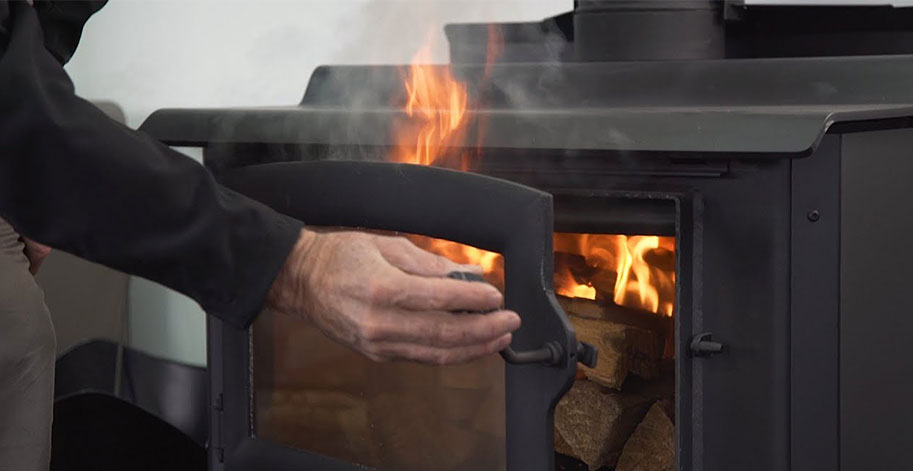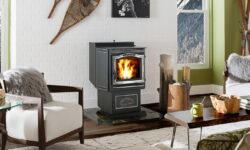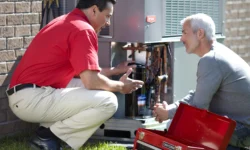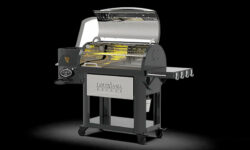If you’re having trouble starting the fire or getting enough heat from your wood stove, make sure you are avoiding the five most common mistakes by using these tips:
- Begin with an initial hot fire.
- Use only dry, seasoned wood.
- Use plenty of kindling.
- Don’t use big wood, split the logs again.
- Give the fire enough air.
If that doesn’t correct the problem, you may have an obstruction in your chimney or screen cap which should be removed by a professional.
Don’t Leave the Stove Unattended when Starting the Fire:
With many wood stoves, it is recommended that you leave the loading door open slightly when starting the fire to allow more air in so the fire burns quickly. However, don’t ever leave the stove unattended with the loading door open, or close the door once the fire is burning strongly. In a catalytic stove, your catalytic combustor may fail prematurely if you leave the loading door open after the fire is well started, so make sure you close the loading door.
Controlling the Amount of Heat:
You can also control the amount of heat by the type of wood you burn. Soft woods, like poplar and pine, are good for low heat fires in the spring and fall. Hard woods, like oak, maple, fir and larch; burn hotter and are good for fires in the dead of winter. Consult your owner’s manual for advice on using the air inputs to control your temperature as well.
Low Temperature in a Catalytic Stove:
If your catalytic stove thermometer doesn’t spike upwards once you close the bypass valve after lighting the initial fire, you need maintenance on your stove. Check your owner’s manual for cleaning and replacement information.
Creosote Buildup:
Your chimney and stove venting should be inspected every year by a certified chimney sweep. If your inspector reports significant creosote buildup, you should review your wood burning habits and wood moisture. Never burn trash in your stove or use any flammable liquids to start the fire, except for commercially available fire starters; and use them as directed.
Chimney Drafting:
As you begin to learn how your stove works, you may notice that sometimes the chimney will not draft properly which can either cause your fire to not start properly or create excessive smoke spillage. One of the most common causes of drafting problems is a kitchen or bathroom exhaust fan or a clothes dryer. When turned on, these products can cause a negative pressure in the house and interrupt the natural drafting of the stove. If your house is particularly airtight, make sure all the fans are off and even crack a nearby door or window for a few seconds before you light your stove’s fire. If you continue to have smoke spillage or spillage begins to occur over a period of time, it is recommended that you have your chimney system checked by a certified chimney sweep (Top Hat!).




